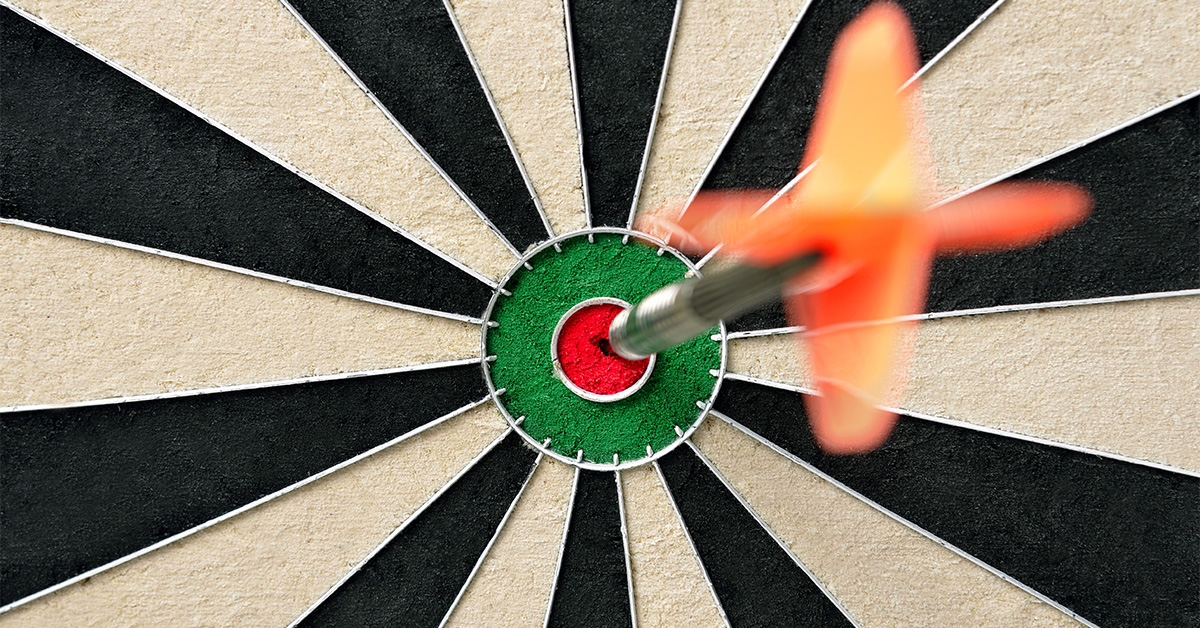Ever feel like you’re shouting into a void with your marketing? Like you’re tossing a giant bowl of spaghetti at the wall, hoping something, anything, sticks? That, my friends, is the opposite of targeted advertising.
Targeted advertising is like a laser-guided missile, not a plate of messy pasta. It’s about getting your message in front of the right people, the ones most likely to book that whale-watching tour or splurge on that gourmet getaway. It’s about understanding your audience so deeply that you can practically predict their next craving (a spa day? A craft brewery tour? A romantic weekend in a secluded cabin?).
Think of it this way: you wouldn’t advertise snowshoes in Hawaii, would you? (Okay, maybe some people would be into it, but you get my drift). Targeted advertising is about finding your tribe, the folks who are already dreaming of exactly what you’re offering. It’s about moving from curiosity to conversion, turning casual browsers into paying customers.
Now, you might be thinking, “Sounds great, Scott, but isn’t that just common sense?” Well, yes and no. It’s common sense to want to reach the right people, but actually doing it requires strategy, data, and a healthy dose of good old-fashioned marketing know-how. It’s like crafting a killer “About Us” page – you need to understand your audience and tell a compelling story that resonates with their needs and desires.
That’s where this guide comes in. We’re going to break down how to hit the bullseye with your paid ads, turning that scattered spaghetti bowl into a finely tuned marketing machine. Buckle up, buttercup, because we’re about to get specific.
Why Targeted Advertising Matters (Or, Why You Shouldn’t Ignore This)
Alright, folks, let’s talk ROI. Return on Investment. The Holy Grail of marketing. You’re not shelling out your hard-earned cash for warm fuzzies, right? You want bookings, reservations, and butts in seats (or on beaches, or in hot air balloons, you get the idea). You want to see a tangible return on your marketing spend, not just fleeting likes and shares.
Targeted advertising is your secret weapon for maximising that ROI. Why? Because it cuts the fluff. No more wasted impressions on people who wouldn’t know a boutique hotel from a backpacker’s hostel. You’re focusing your firepower on the people who are actually interested in what you have to offer. Remember that time I ignored marketing’s “next big thing” and focused on proven strategies like repeat bookings and customer loyalty? That led to an 18% revenue increase for a B&B client. Targeted advertising operates on the same principle – focusing on what works.
Let’s say you run a charming B&B in the heart of wine country. You could blast your ads to everyone and their grandma, hoping someone bites. Or, you could target wine enthusiasts, couples looking for a romantic getaway, and foodies itching to explore local wineries. Which approach do you think will get you more bang for your buck? (I think you know the answer).
Here’s the deal: generic ads are like bland oatmeal – they might fill you up, but they don’t exactly leave you craving more. Targeted ads, on the other hand, are like a perfectly seared steak with all the trimmings – irresistible and memorable. They speak directly to your ideal customer, addressing their needs, desires, and (let’s be honest) their secret vacation fantasies.
And here’s another bonus: targeted advertising isn’t just about getting more bookings today. It’s about building long-term relationships with your customers. By showing them that you understand their needs and preferences, you’re building trust, loyalty, and (drumroll please) repeat business. It’s the same philosophy behind creating memorable customer experiences – it’s about exceeding expectations and fostering genuine connections.
So, are you ready to ditch the oatmeal and embrace the steak? Let’s dive into the how.
Part 3: Implementing Targeted Advertising – A Step-by-Step Guide (Because I Know You Want Actionable Advice)
Alright, marketers, it’s game time. We’ve talked about the what and the why of targeted advertising. Now, let’s get down to the nitty-gritty of the how.
Step 1: Know Your Audience (Like You Know Your Favourite Cocktail)
Before launching a paid ad campaign, you need to know exactly who you’re talking to. This isn’t just about demographics (age, location, income); it’s about delving into their psychographics – their lifestyle, values, interests, motivations, and travel style. What are their pain points? What are their dream vacations? What keeps them up at night (besides the kids or that second glass of Cabernet)? Developing a deep understanding of your ideal customer profile is crucial. Creating detailed customer personas – semi-fictional representations of your ideal customer based on research and data – helps you visualise and target your dream guest. For a deeper dive into understanding your audience and crafting compelling narratives, check out our guide on crafting a killer “About Us” page. Give them names, backstories, and motivations Give them names, backstories, and motivations. The more detailed your persona, the more effectively you can tailor your messaging.
Step 2: Segment Your Market (Divide and Conquer)
Knowing your ideal customer is the first battle; segmenting your market is the next. This involves dividing your broader target audience into smaller, more focused groups. You can segment based on demographics, psychographics, behaviour (past website visits, email sign-ups, booking history), or a combination of factors. A family of four searching for a kid-friendly all-inclusive resort has vastly different needs than a solo adventurer backpacking through Southeast Asia. Segmenting allows you to craft laser-focused messages that resonate with each group’s unique desires and pain points. To further refine your audience targeting and content strategy, explore our comprehensive guide on destination marketing blog strategies. For example, budget travellers might respond to discounts and deals, while luxury travellers prioritise unique experiences and personalised service.
Step 3: Choose Your Weapons (Google Ads vs. Facebook Ads – Or Both!)
Google Ads and Facebook Ads are the heavy hitters of paid advertising. Google Ads excels at capturing intent – reaching people actively searching for specific products or services. Think keywords, location targeting, and device type. Someone Googles “romantic hotels in Paris,” and bam, your ad appears. Facebook Ads, conversely, targets users based on interests, behaviours, and connections. This is where you target those wine enthusiasts, history buffs, or adventure seekers. You can even target users who’ve liked similar businesses – tapping into pre-existing interests. Often, a combined approach leveraging both platforms yields the best results.
Step 4: Data is Your Friend (Don’t Be Afraid to Get Nerdy)
Launching your campaigns is just the beginning. The real magic happens in the analysis and optimization. Don’t just “set it and forget it.” Dive deep into the data – which segments are clicking, converting, and costing the most? Which keywords are driving bookings? Which ad variations are performing best? This is where A/B testing becomes crucial. Experiment with different headlines, images, calls to action, and even targeting parameters. Continuously tweaking and refining based on data insights is the key to maximising ROI.
Step 5: Keyword Research – The Not-So-Secret Sauce (Because Words Matter)
Keywords are the foundation of your Google Ads strategy. They’re the words and phrases potential customers use when searching online. Thorough keyword research is essential. Use tools like Google Keyword Planner, Ubersuggest, SEMrush, or Ahrefs to identify relevant keywords with decent search volume and manageable competition. Think long-tail keywords (more specific phrases) to capture higher-intent searches. “Luxury spa resorts in Bali” will likely outperform “spa.”
Step 6: Interest-Based Targeting – Get Inside Their Heads (In a Non-Creepy Way)
On Facebook, interest-based targeting is your superpower. Target users based on their declared interests, page likes, group memberships, and online activity. Facebook Audience Insights provides invaluable data to help you pinpoint relevant interests and tailor your messaging. Imagine targeting ads for a cooking class to users who follow culinary pages or belong to foodie groups. The more precisely you target, the higher your chances of engagement and conversion.
Step 7: Refine, Refine, Refine (Because Marketing is a Marathon, Not a Sprint)
Targeted advertising is an ongoing process – a marathon, not a sprint. Continuously analyse your campaign performance, gather data, and refine your strategies. As you learn more about your audience and their responses, adjust your targeting, optimise bids, and refresh your ad copy. Staying adaptable and responsive to changing trends and user behaviour is essential for long-term success.
Step 8: Tools of the Trade (Because We Love a Good Gadget)
Beyond keyword research and audience insights, a plethora of tools can supercharge your targeted advertising efforts. Explore options like SEMrush, Ahrefs, and Moz for SEO and competitive analysis. Consider social media management platforms like Hootsuite and Buffer for streamlined scheduling and reporting. Don’t be afraid to experiment and find the tools that best fit your workflow and budget.
Step 9: Talk to Their Pain Points (Because Empathy Sells)
Remember those customer personas? Use them to craft ad copy that speaks directly to their pain points and desires. What are their travel frustrations? What are they seeking in a vacation experience? Position your offerings as solutions to their problems. Are they stressed-out parents craving a relaxing getaway? Highlight the tranquillity and family-friendly amenities of your resort. Are they adventure seekers looking for an adrenaline rush? Showcase the thrilling experiences your tour company provides.
Step 10: Measure Your Success (Because Numbers Don’t Lie)
Finally, meticulously track your results. Monitor key metrics – click-through rates (CTR), conversion rates, cost per acquisition (CPA), return on ad spend (ROAS) – to gauge the effectiveness of your targeting strategies. Identify what’s working, what’s not, and adapt accordingly. Regularly reviewing and analysing data is non-negotiable for optimising campaign performance and maximising your marketing ROI.
Targeted advertising is a powerful tool for reaching the right people with the right message at the right time. By following these steps, you can ditch the spaghetti-at-the-wall approach and hit the bullseye with your paid ad campaigns. And if you’re still feeling overwhelmed or need a helping hand, remember, Scott Aussie is here to guide you through the process. We specialise in helping tourism and hospitality businesses like yours achieve real results with data-driven marketing strategies. Contact us today for a free consultation and let’s discuss how we can help you reach your marketing goals.










